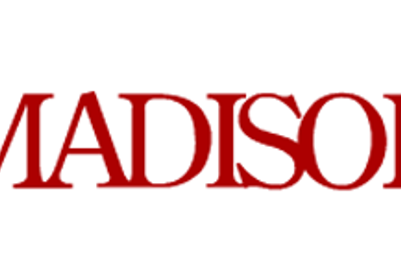
Bindu Nair Maitra attempts to understand the impact of inflation and recession on a brand’s marketing spend
Do brands cut back their spending during a recession? And if they do, would traditional media spends get logically diverted towards third party communications such as PR which are seen as more credible consumer touch points with consumers? The PR industry in India has seen a steady growth curve over the last few years, suggesting an increasing share of relevance
Anthony Pettifer, group director, brand and communications, INX Media says, “Whatever the state of the economy, there has always been a different role for PR and advertising, given the basic functional differences between the two. The power of TV advertising in building brands is never going to change. In some ways, the more competitive the world becomes, the more important it is for people to build their brands for the long term. Between advertising and PR, it’s not an ‘either’, ‘or’ situation. It’s about reaching the consumer at every touch point.”
Ashwani Singla, Chief Executive, Genesis Burson-Marsteller, agrees, “Yes, PR will become bigger in its share of voice and relevance but not at the cost of advertising. All forms of third party communication; PR, BTL, events, digital, CRM are set to grow. Specifically PR’s growth is due to the nature of its profession, which is to create a credible dialogue. In an environment where trust is at a premium, PR enables that, hence it will have an increasing relevance. But the share of traditional above the line in marketing spends is too big for it to be affected by PR spends, which may be growing fast, but from a comparatively smaller base.”
The PR industry in India has seen a robust growth curve in the last few years. An ASSOCHAM study recently pegged the growth of PR in India at $ 3 billion growing to $ 6 billion by 2010. Genesis’ Singla says a realistic estimate of the Indian PR industry would be about Rs 300 crores. He adds, “The $ 3 billion number with a projection of $ 6 billion by 2010 gives us a CAGR of 33%, which is not possible. We see the annual growth in the PR industry to be at a steady 32 to 35% on a base of Rs 300 crores.” He further adds, “The role of PR, five years ago, was one of press relations. I see that role shifting to one of public perception.”
Apurva Purohit, CEO, Radio City however feels that with traditional above the line media such as print and TV becoming more expensive, PR, BTL, on-ground as well as events will gain in significance.
Sunil Gautam, MD, Hanmer MS&L, says that the biggest change is that PR has started gaining acceptance as an industry, rather than as an also-ran communications offering. He adds, “Till a decade ago, many PR firms were an extension of creative services / advertising agencies, offering PR free as a value add to their advertising clientele. Today, it is an integral part of communications planning, from branding strategies to on-ground execution.”
So while most marketers feel that there is a need to increase or at least sustain marketing spends in a recession, they are dismissive of PR spends eating into the share of traditional ATL spends.
ExpertSpeak
 Apurva Purohit, CEO, Radio City 91.1 FM
Apurva Purohit, CEO, Radio City 91.1 FM
“PR is a very critical part of the complete 360 degree marketing mix. For brands such as ours, which don’t spend on TV, doing PR specifically for trade marketing is an important component, where direct marketing and PR work very well. With TV and print getting increasingly expensive every year, we have begun using PR for the consumer segment too. It is far more credible. PR becomes a part of the information that consumers are actively seeking so it makes more sense. BTL, PR, activation, on-ground are all going to become a far larger component than traditional media.”
 Sunil Gautam, MD, Hanmer MS& L
Sunil Gautam, MD, Hanmer MS& L
“Pressures on communication budgets have been around irrespective of the inflationary situation. However companies cannot completely cease communicating with their target audiences and so PR is one of the best options. It has become an integral part of communications planning, right from branding strategies to on-ground execution. PR consultancies have moved way beyond just media relations, clients have realized that PR delivers if planned and executed well. We expect the year on year growth to continue. PR is gaining acceptance as an industry, rather than an also-ran communications offering.”
 Veena Gidwani, CEO, Madison Public Relations
Veena Gidwani, CEO, Madison Public Relations
“Most savvy companies use a combination of PR and advertising for maximising reach and impact. For some,it may work well to put in additional budgets on PR considering the ROI it gives. Therefore to some extent, inflation may result in the share of PR rising. While actual PR budgets may not increase dramatically, the importance of PR in the overall marketing communications plan will see a rise. Over the last few years, PR has seen a substantial growth year on year, due to the overall buoyancy of the economy, stock markets and new international brands in India. Corporates are realising the rich returns that PR brings on limited spends.”
 Anthony Pettifer, Group Director, Brand and communications, INX
Anthony Pettifer, Group Director, Brand and communications, INX
“There has always been a different role for PR and advertising, given the basic functional differences between the two. History has shown that companies who advertise for the long term are the ones who sustain themselves. PR is an important component of this because good PR is a great RoI. For a media brand like us, PR always been an important part of our communication. Our product is very attractive as content for other media and talking about the shows and the stars is interesting content for newspaper and magazine readers, compared to say, industrial products or FMCG.”
 Ashwani Singla, chief executive, Genesis Burson- Marsteller
Ashwani Singla, chief executive, Genesis Burson- Marsteller
“The economic situation is cyclical, its been happening for the last 20 years. Budgetary cuts should not be confused with the long term trend of the movement. The most important development in the area of consumer is that sources of information and influence are changing. So less people want to believe what companies are saying about themselves. But they want to look at independent, credible and verifiable information and each other as sources of endorsement for their decisions. In an environment where trust is at a premium, PR enables that, so yes, it has increasing relevance today.”






.jpeg&h=268&w=401&q=100&v=20250320&c=1)
.png&h=268&w=401&q=100&v=20250320&c=1)
.png&h=268&w=401&q=100&v=20250320&c=1)

